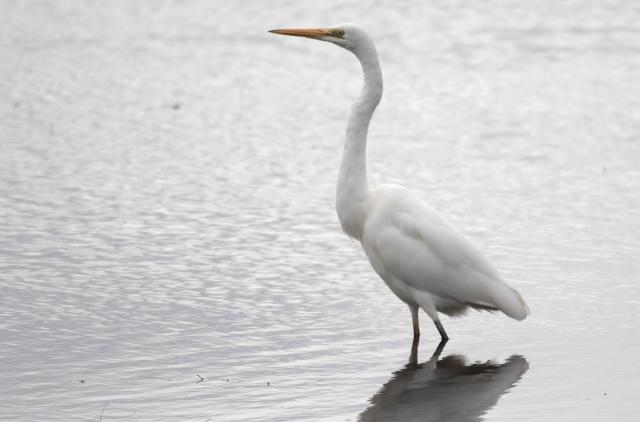I’ve had some walks on the beach in the sunshine looking for whales, but unlike many around the Bellarine, unfortunately I haven’t managed to spot any.
On my way to work one fine day I drove around Corio Bay to the boat ramp below the Geelong Botanic Gardens to see if I could photograph Australian gannets.
There were no gannets but there were plenty of hoary-headed grebes in the bay.
I spotted four immature Pacific gulls at the boat ramp. Pacific gulls are large gulls that have a white head, neck, and underparts.
The upperparts and wings are black, and there is a white edge on the wings. Adults have a large yellow bill with a red tip and the legs and feet are yellow. The birds that I spotted were immature first year Pacific gulls in that they had dark brown plumage, a pale face, a pinkish bill with a dark tip.
Second-year immature birds have dark brown wings, a paler rump, and a yellow bill with a black tip.
Also, in Corio Bay at Point Henry there were around 50 little pied cormorants on the pier, which was a good number of these birds. In the shallows on the beach was a great egret, feeding among four royal spoonbills.
Great egrets can be confused with other white egrets found in Australia, namely cattle egrets, little egrets and intermediate egrets (a species that is rarely seen in southern Victoria).
Great egrets can be differentiated from the other egrets by the length of its neck, which is greater than the length of its body. The neck has an obvious kink in it. Great Egrets also have a dark line that extends from the base of the bill to behind the eye.
I received an email from Carole, who went out a couple of days recently, and the first find was a curious eastern yellow robin at Anglesea.
The robin seemed to be delighted to find humans and showed off its beautiful colouring. Carole also spotted a female satin bowerbird around Anglesea.
She then walked the cliffs at Clifton Springs and was welcomed by a flame robin. Alas this robin wasn’t so willing to have a photo taken being just a little shy, and off he went before Carole could photograph him.
Carole noted that the brilliant colouring of the male flame robin stays in the mind, and it’s a great time of year for birding.
Tayler Suze sent me a photo of a wader that she saw on the beach at the river mouth in Anglesea that she thought may have been a juvenile hooded plover. The plover in the photo was a red-capped plover.
This species can be seen around coastal and inland wetland habitats, including estuaries, bays, beaches, sandflats, mudflats and saline and inland wetlands. Red-capped plovers have a white forehead and underparts. Their upperparts are mainly grey-brown. Adult males have a rufous or reddish-brown crown and females have a paler rufous and grey-brown crown.
In breeding plumage these birds have a red-brown crown and in non-breeding plumage they are duller in colour, like the bird in the photo.
Thanks so much for the emails, and enjoy the winter sunshine. As Carole said, it’s a lovely time of year for birding.










